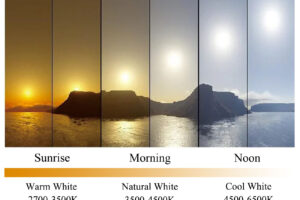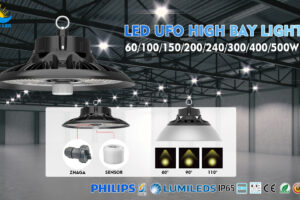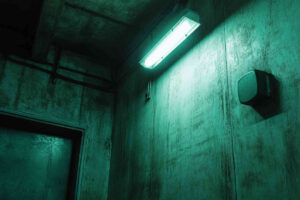Ever wondered why some LED lights fail too soon or flicker unexpectedly? Poor manufacturing can lead to early failures, wasted money, and safety hazards. Understanding how LED lights are made helps you choose quality products and avoid costly mistakes.
LED lights are crafted through a meticulous process involving semiconductor materials, precise assembly, and rigorous testing. This ensures durability, energy efficiency, and optimal performance for various applications.
Stay with me as we delve deeper into the fascinating world of LED light manufacturing.
Table of Contents
How Do We Make LED Lights?
LED lights are made through a precise semiconductor process. It starts with a wafer made from materials like gallium nitride (GaN) or gallium arsenide (GaAs). These materials are treated with chemical impurities to create two regions—p-type and n-type. When they’re layered together, they form a p-n junction.
A tiny current is then passed through this junction. As electrons move from the n-type to the p-type layer, they release energy in the form of light. This is called electroluminescence.
The light-emitting chip is then mounted onto a base and connected to fine gold wires. It’s sealed in a protective housing—often with a lens—to control the beam and protect it from dust or moisture. In the final step, these chips are integrated into LED modules or luminaires, along with drivers and heat sinks, creating a complete lighting solution ready for installation.
LED Light Construction
An LED light is built from several critical components that work together to produce efficient, long-lasting illumination:
- Chip: This is the core of the LED. It’s a small piece of semiconductor material—usually gallium nitride—that emits light when an electrical current passes through it. The quality and size of the chip determine the light’s brightness and efficiency.
-
Encapsulation: The chip is enclosed in a protective layer, usually a clear resin. This not only shields the chip from dust, moisture, and physical damage but also influences how the light is emitted. Some encapsulations are designed to spread light evenly or enhance certain beam angles.
-
Lead Frame: These are the metal connectors that supply electrical current to the chip. They anchor the LED inside the housing and ensure stable electrical contact. Good lead frames are made from conductive and corrosion-resistant materials.
-
Lens: Placed over the encapsulated chip, the lens shapes and directs the beam of light. It can be engineered for specific applications, such as narrow spotlights or wide floodlights, depending on the desired beam angle and focus.
All these parts are precisely assembled and thermally managed, often with added heat sinks, to maintain performance and extend the LED’s lifespan. A well-constructed LED light can deliver reliable, high-quality illumination for years.
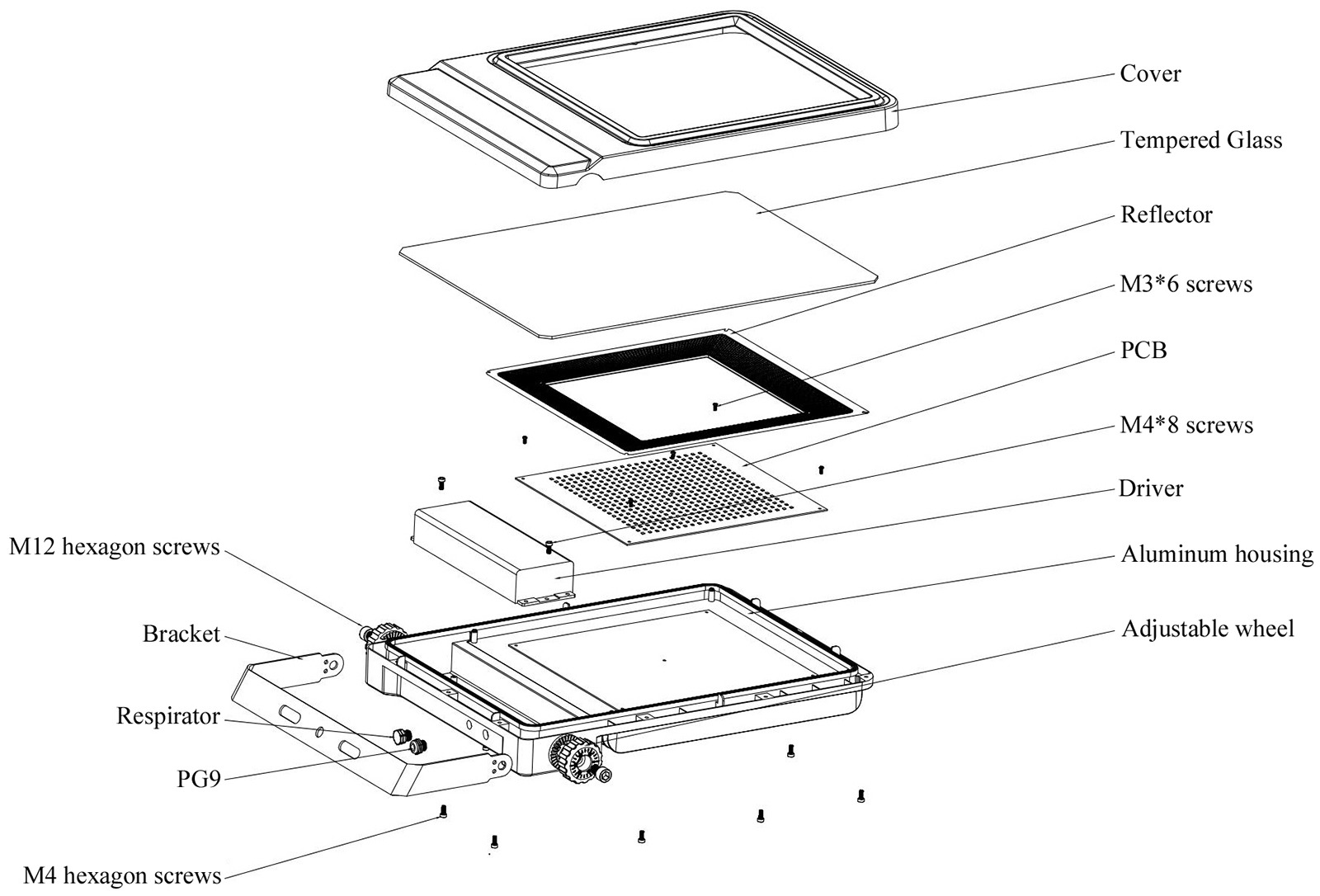
What Materials Are LED Lights Made Of?
LED lights are built using a range of specialized materials, each selected to enhance efficiency, performance, and longevity.
- Semiconductors: The core of an LED is made from semiconductor compounds like gallium nitride (GaN), gallium arsenide (GaAs), or gallium phosphide (GaP). These materials create the p-n junction where electroluminescence occurs, producing visible light when current flows through.
-
Encapsulation: To protect the semiconductor chip from dust, moisture, and mechanical damage, it’s encased in epoxy resin or high-grade silicone. These materials offer optical clarity and thermal stability, ensuring the LED operates safely in different environments.
-
Phosphors: In white LEDs, a layer of phosphor is applied to the chip. This material absorbs some of the blue or UV light and re-emits it as yellow or white light. The combination creates the bright white appearance typical in general lighting applications.
-
Metals: Conductive metals like copper or aluminum are used for the lead frames and heat sinks. Copper ensures efficient electrical connections, while aluminum serves as a thermal management component, pulling heat away from the chip to keep it cool.
These materials work together to create a light source that is energy-efficient, long-lasting, and capable of withstanding daily wear and tear in various commercial, industrial, and residential settings.
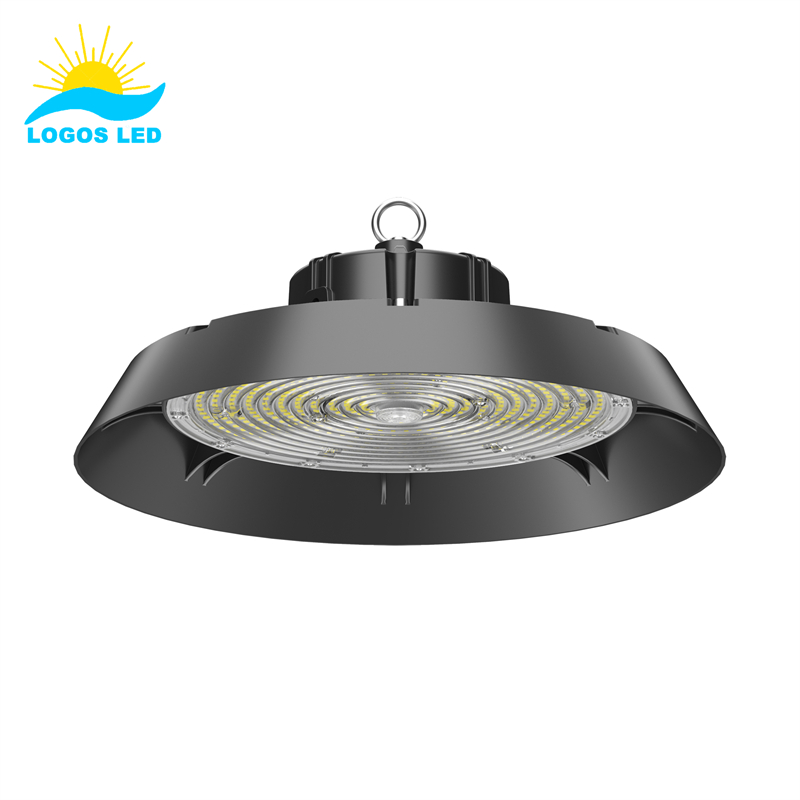
What Is the Manufacturing Process of LED Lights?
Producing LED lights involves a series of high-precision steps that transform raw materials into high-performance lighting products. Here’s how it works:
- Wafer Fabrication
The process begins with growing semiconductor wafers, typically made from gallium nitride (GaN) or similar materials. These wafers are doped with specific impurities to create p-type and n-type regions, forming the p-n junction essential for electroluminescence. -
Die Preparation
Once the wafer is ready, it’s sliced into tiny chips or “dies.” Each die becomes an individual LED. This step involves precision sawing and surface treatments to ensure the chips are uniform and defect-free. -
Mounting
Each chip is then carefully mounted onto a lead frame or base. This forms the electrical and mechanical support for the LED. Some manufacturers use Surface Mount Technology (SMT) for this step. -
Wire Bonding
Thin gold or aluminum wires are used to connect the LED chip to the lead frame. This step ensures electrical current can pass through the chip to produce light. It requires clean-room environments and high-precision tools. -
Encapsulation
The chip and bonding wires are sealed with a transparent material, typically epoxy resin or silicone. This protects the LED from moisture, dust, and mechanical impact. -
Phosphor Application
For white LEDs, a phosphor coating is applied to the encapsulated chip. This layer converts part of the blue or UV light into yellow or red light, creating a full-spectrum white output. -
Testing
Each LED is rigorously tested for brightness, color accuracy, voltage, and durability. Automated systems check for defects and ensure the LEDs meet performance standards. -
Packaging
Finally, the completed LED chips are integrated into lighting fixtures or bulbs. This includes adding drivers, heat sinks, lenses, and casings. The finished products are then packed and prepared for distribution.
Each of these steps plays a critical role in ensuring the LED lights are efficient, durable, and safe for use in everything from household fixtures to industrial-grade floodlights.
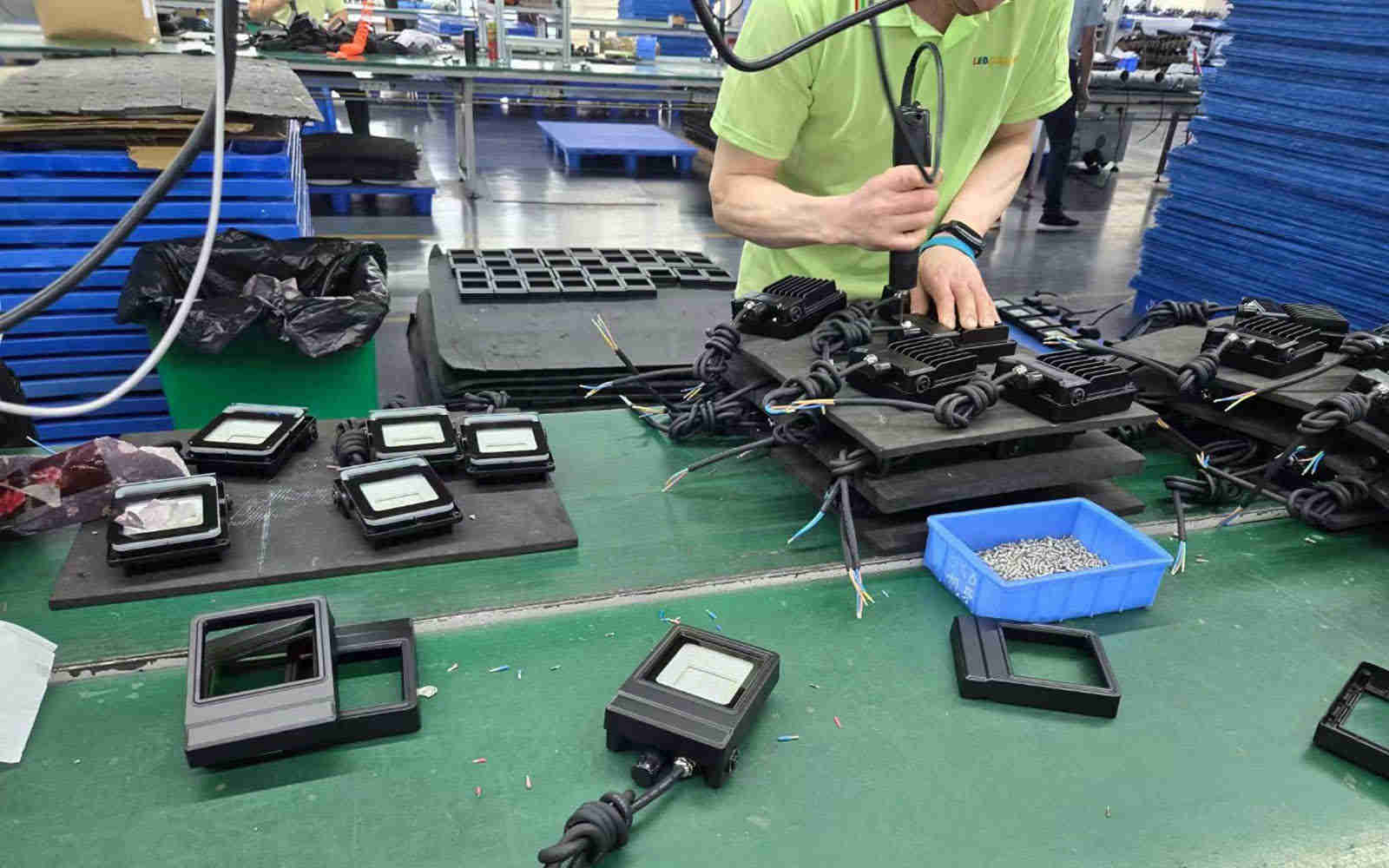
How Do LEDs Get Power?
LEDs operate on direct current (DC). They require drivers to convert alternating current (AC) from power sources into DC. These drivers regulate voltage and current, ensuring consistent performance and preventing damage from power fluctuations.
How Are Different LED Lights Made?
Understanding how various LED lights are made helps explain their performance and suitability for different applications. Here’s a closer look at the manufacturing methods for popular LED types:
How Are LED Light Bulbs Manufactured?
LED bulbs are created by assembling key components within a traditional bulb-shaped casing. Inside, high-efficiency LED chips are mounted onto a metal core printed circuit board (MCPCB) that’s paired with a heat sink to manage temperature. An integrated driver regulates power, while a diffuser lens spreads the light evenly to mimic the look and feel of incandescent bulbs. These bulbs are tested for thermal stability, brightness, and voltage consistency before packaging.
How Are LED Tube Lights Made?
LED tube lights are designed to replace fluorescent tubes. The core of the tube contains a strip of surface-mounted LEDs affixed to an aluminum or thermally conductive heat sink that runs the length of the tube. This strip is encased in a cylindrical polycarbonate or glass shell that includes a frosted diffuser to provide uniform illumination. Electrical connections and driver circuits are placed in the tube’s end caps. Types A, B, A+B, and C are produced depending on compatibility with ballasts.
How Are LED Panel Lights Made?
LED panel lights consist of a slim metal frame that houses a matrix of LEDs mounted with a light guide plate (LGP). This plate directs and spreads the light evenly across the panel surface. A reflective sheet beneath the LGP maximizes light output, while a diffuser layer on top ensures uniform brightness. The components are sandwiched in a lightweight, durable housing and integrated with an external or built-in driver for power regulation.
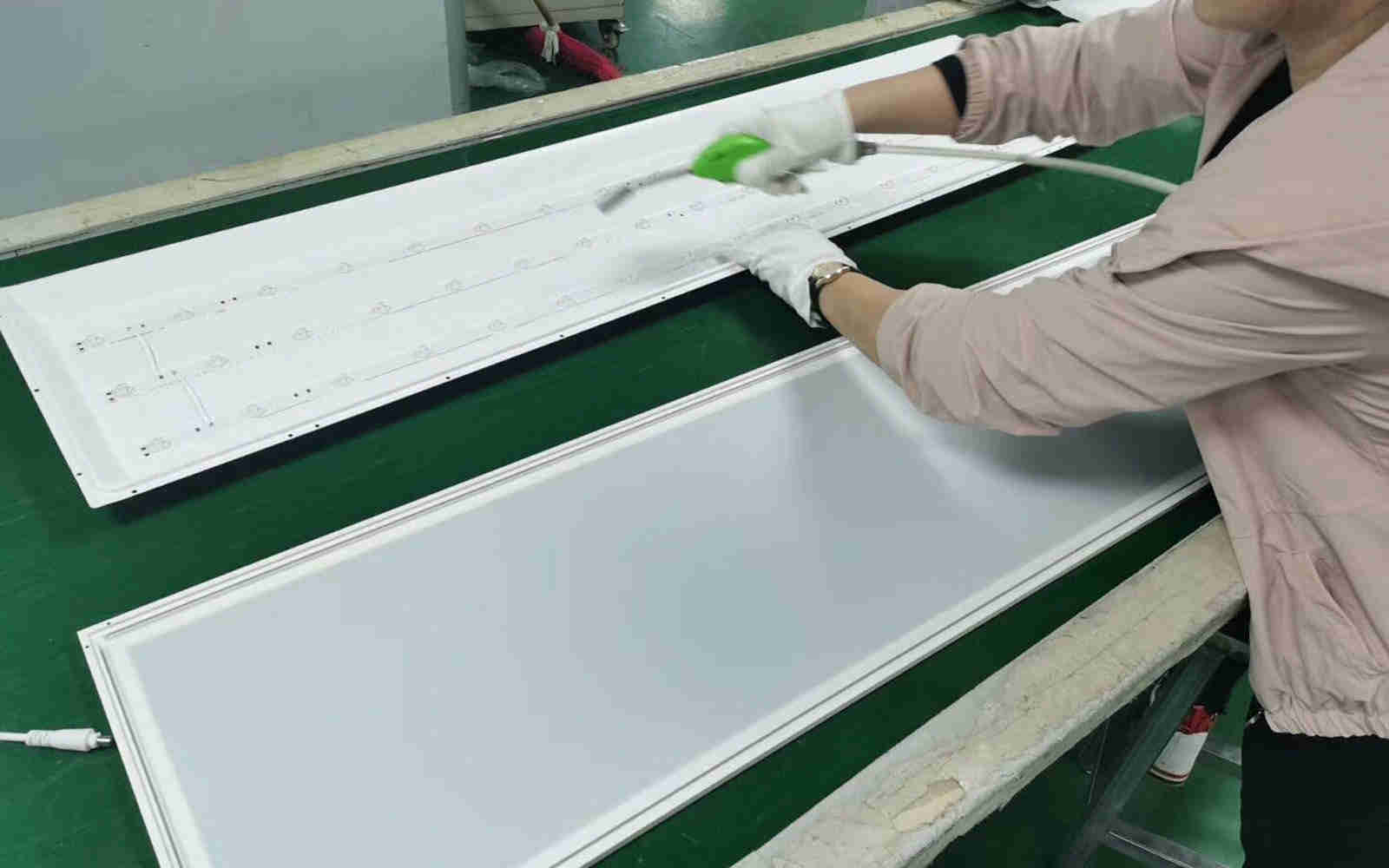
LED Panel Light Assembly
How Are LED Downlights Made?
LED downlights are recessed lights that focus illumination downward. Their production begins with high-output LED chips fixed to a heat sink. The light is then channeled through a reflector and tempered glass or polycarbonate diffuser. These fixtures are built with fire-resistant housings and may include spring clips or brackets for ceiling installation. A dimmable or fixed driver powers the LED module based on application needs.
How Are LED Strip Lights Made?
LED strip lights are made on flexible printed circuit boards (FPCs) that host evenly spaced surface-mounted LEDs. A resistive circuit ensures each LED receives the correct voltage and current. The entire strip is backed with adhesive tape for easy mounting and can be coated with a silicone or epoxy layer to enhance moisture and dust resistance. Strip lights are cuttable and often sold in reels for versatile applications.
How Are LED High Bay Lights Made?
High bay LED lights are engineered for performance in large, tall spaces. They begin with COB (chip-on-board) or SMD LEDs mounted on a heavy-duty MCPCB attached to a robust aluminum heat sink. These units often include a specialized reflector or lens to direct the beam and improve focus. The lights are paired with powerful drivers—often dimmable—and enclosed in impact-resistant housings with IP ratings suitable for industrial environments.
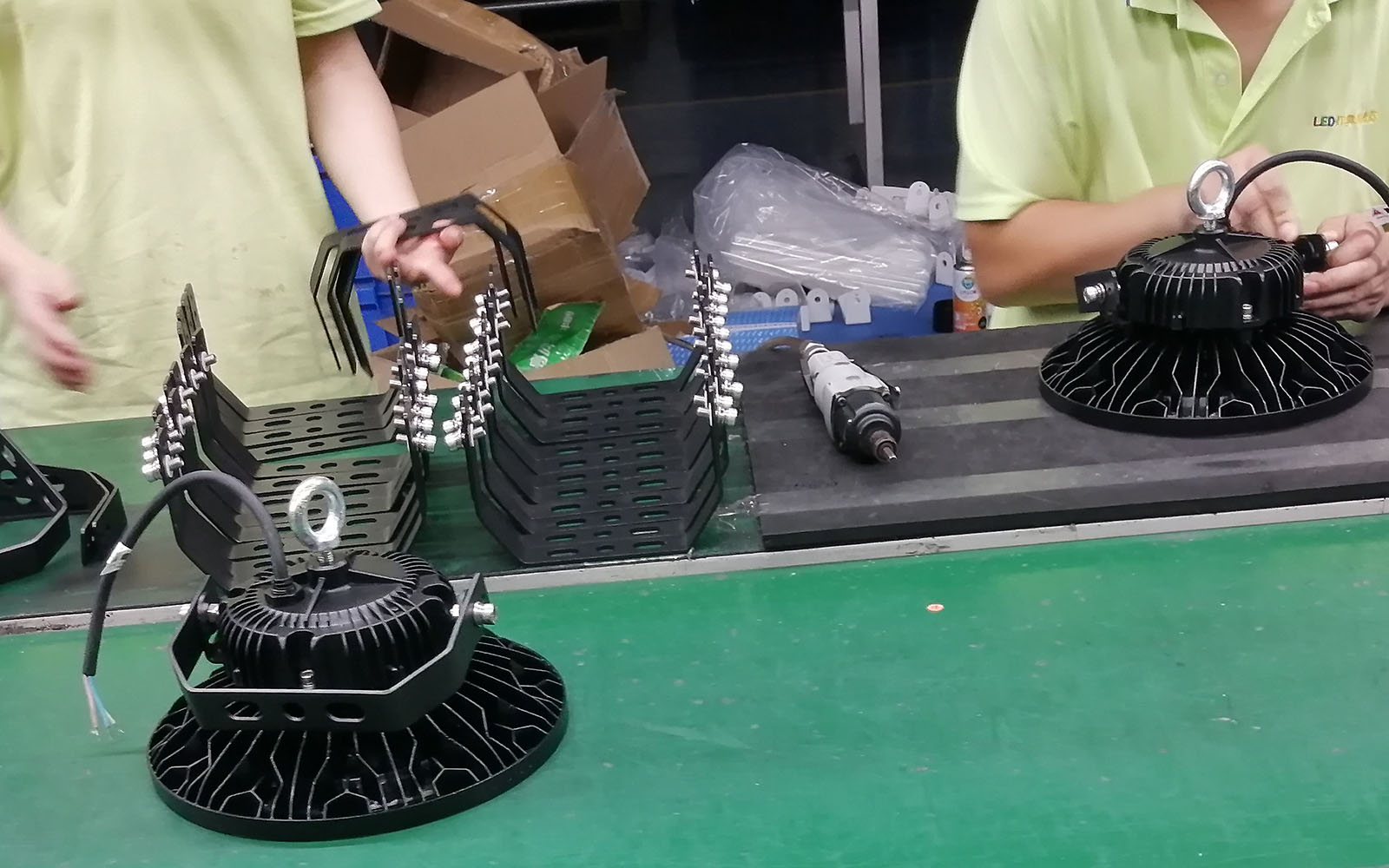
How Are LED Flood Lights Made?
Flood lights use high-intensity LED chips arranged on a single board or multiple modules. A wide-angle lens system and reflective optics help cast light over a broad area. These fixtures are enclosed in weatherproof aluminum housings, often sealed with silicone gaskets and impact-resistant glass. Heat sinks are oversized to support continuous operation in harsh outdoor conditions, and drivers are installed to ensure constant current.
How Are LED Street Lights Made?
LED street lights feature modular arrays of high-efficiency LEDs mounted on linear or rectangular aluminum substrates. Each module includes precision lenses designed for specific beam patterns, such as Type II or Type III distributions for roadways. The fixtures are housed in die-cast aluminum with corrosion-resistant coatings. Integrated surge protection, thermal sensors, and programmable drivers enhance reliability and performance in city infrastructure.
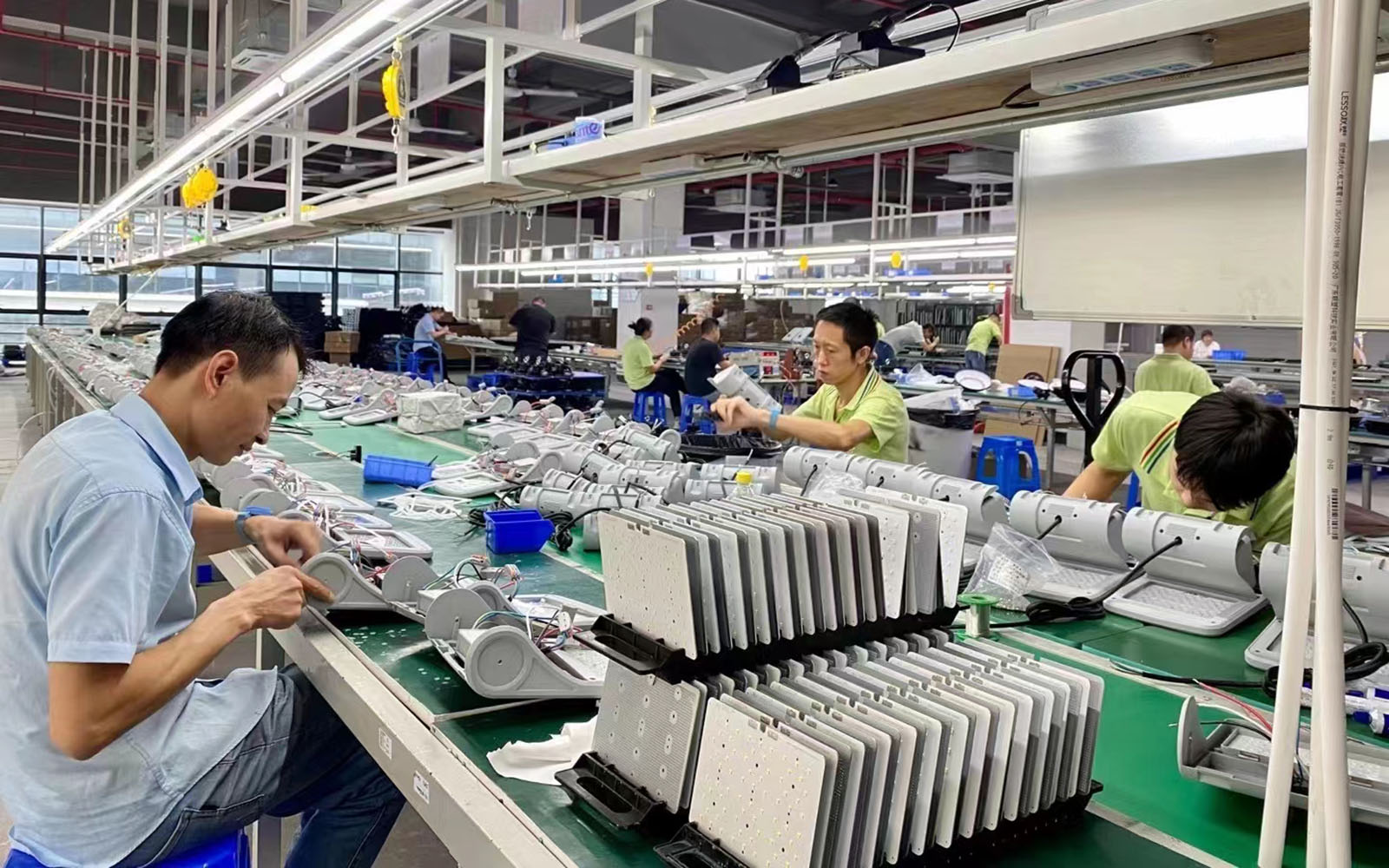
LED street light Assembly
Each type of LED light is purpose-built, from its core chip to its outer shell, to deliver optimal performance in the environments where it’s installed.
How Do LED Lights Change Color?
LED lights change color through one of two primary methods: using multiple diodes or phosphor-based technology. In RGB (Red, Green, Blue) LEDs, three separate LED chips are housed within a single package. By varying the intensity of each chip, a wide range of colors—including white—can be created. This is the basis for most color-changing LED strip lights and smart bulbs.
Another method involves tunable white or color temperature adjustable LEDs. These use a combination of cool white and warm white LEDs. The user can shift between different shades of white—like from 2700K to 6500K—using dimmers, remote controls, or smart systems.
Advanced LED systems use digital controllers or DMX protocols to automate color transitions, sequences, or effects. These are especially common in architectural lighting, stage lighting, or LED displays. Whether for mood lighting, visual appeal, or task-specific needs, color-changing LED technology offers flexible and customizable illumination.
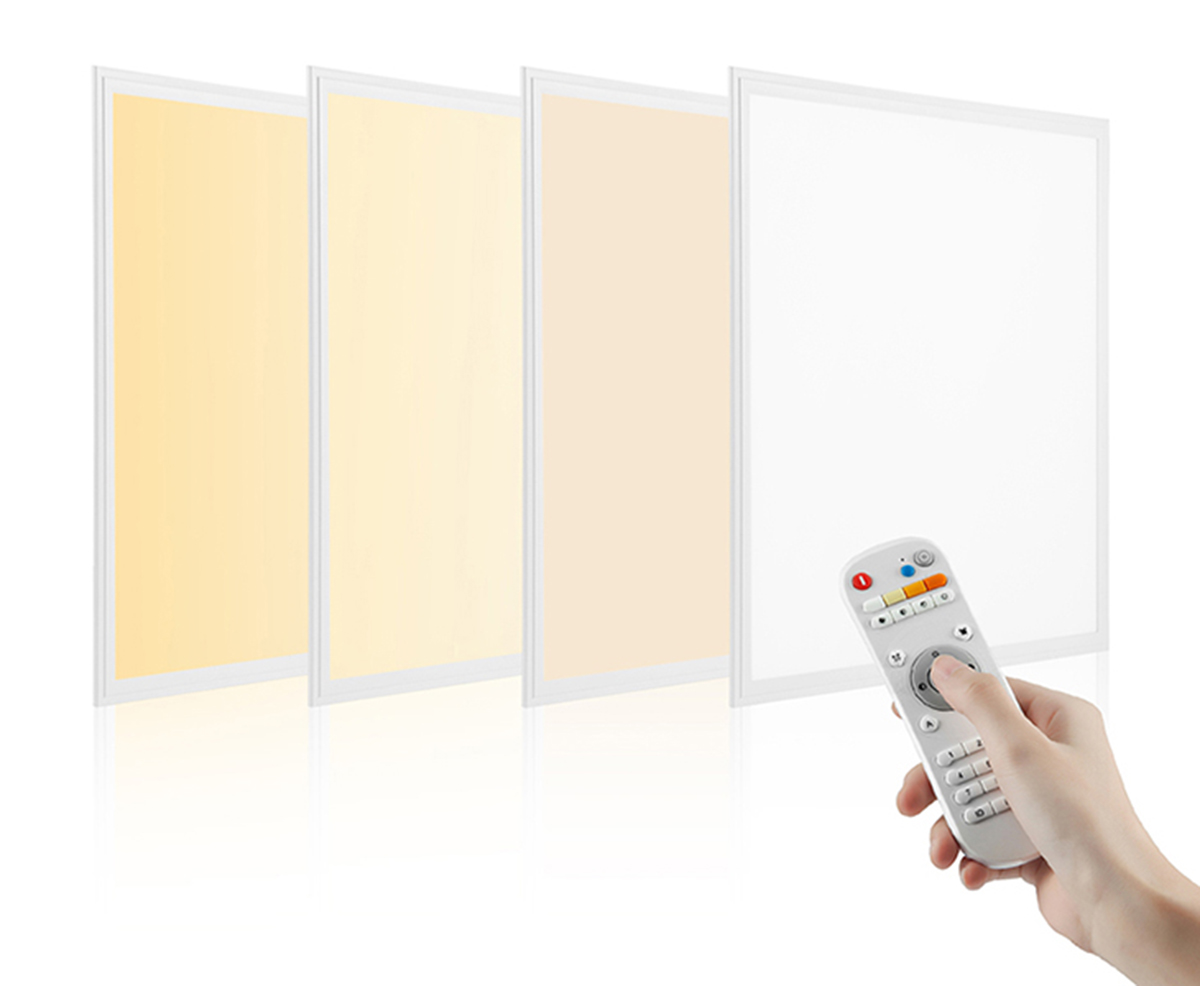
Why Do LEDs Last So Long?
LEDs have an impressively long lifespan, often reaching 50,000 hours or more, thanks to their solid-state design. Unlike traditional bulbs, they don’t rely on fragile filaments or gas-filled tubes that wear out quickly. Instead, they use semiconductors to emit light, which are far more durable and efficient.
One major reason LEDs last so long is because they generate very little heat. Excessive heat is a key factor in the failure of traditional lighting. LEDs convert most of their energy into light, not heat, which puts less stress on internal components. This efficient operation results in slower material degradation over time.
Another critical factor is thermal management. High-quality LED lights are built with aluminum heat sinks or integrated cooling systems to pull heat away from the diode. This keeps the temperature low and extends the fixture’s lifespan. Combined with smart driver circuitry and quality materials, this design ensures LEDs provide consistent performance over many years of use.
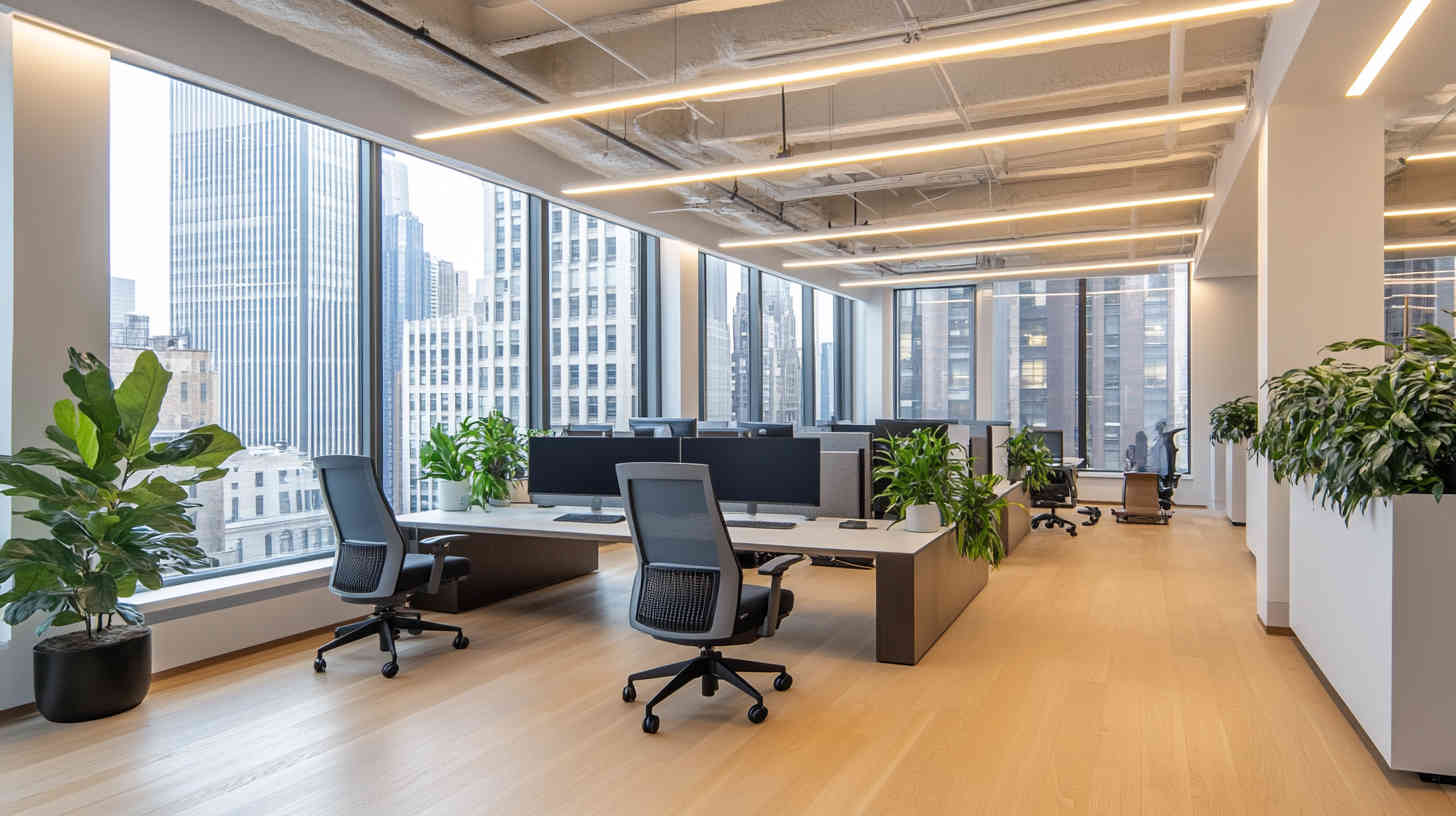
Conclusion
Understanding the intricate process of LED light manufacturing empowers you to make informed decisions. Quality materials and precise assembly result in reliable, energy-efficient lighting solutions. If you have questions or need assistance with LED lighting options, feel free to contact us at Logos Lighting.


